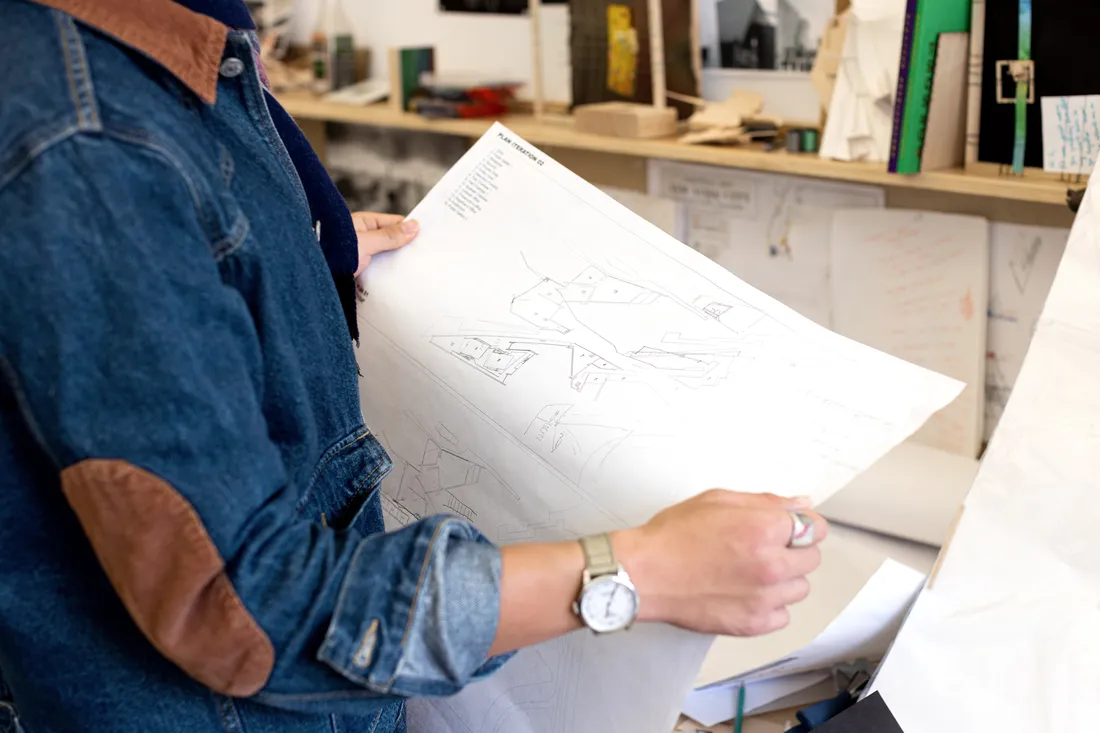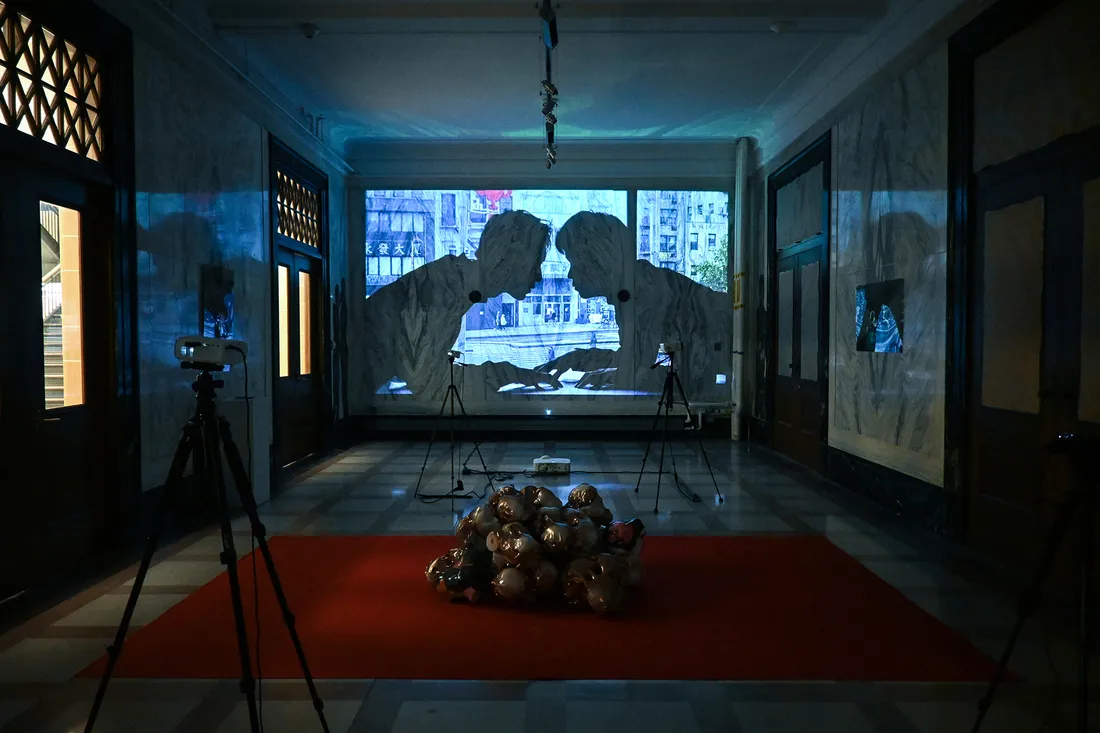
Ngai Lan Tam ’23 explored relationships between colonialism in Asian countries, techno-orientalism and the subversive power of queer expression. Image provided courtesy of Ngai Lan Tam.
Fifth-year students in the School of Architecture’s undergraduate program at Syracuse University devote their last year to a major design research project. Ngai Lan Tam ’23, who also minored in visual culture in the College of Visual and Performing Arts, created and exhibited a built experience that combined research, structural design, film and performance. She explored how expression of emotions and queer identity challenge stereotypical depictions in techno-orientalism, which portrays East Asians as robotic, technologically advanced in menacing ways and void of a depth of human emotions.
Techno-orientalism: The portrayal of East Asians as robotic, technologically advanced in menacing ways and void of a depth of human emotions.
Tam’s project addresses two different but intersecting issues. She delves into how nuanced human experience and the expression of complex emotions negate the dehumanization of Asians inherent to techno-orientalism. She also considers how the legacy of colonialism in Asian countries has led to cultural internalization of negative associations—including fear, shame, denial and repression—around queer identities.
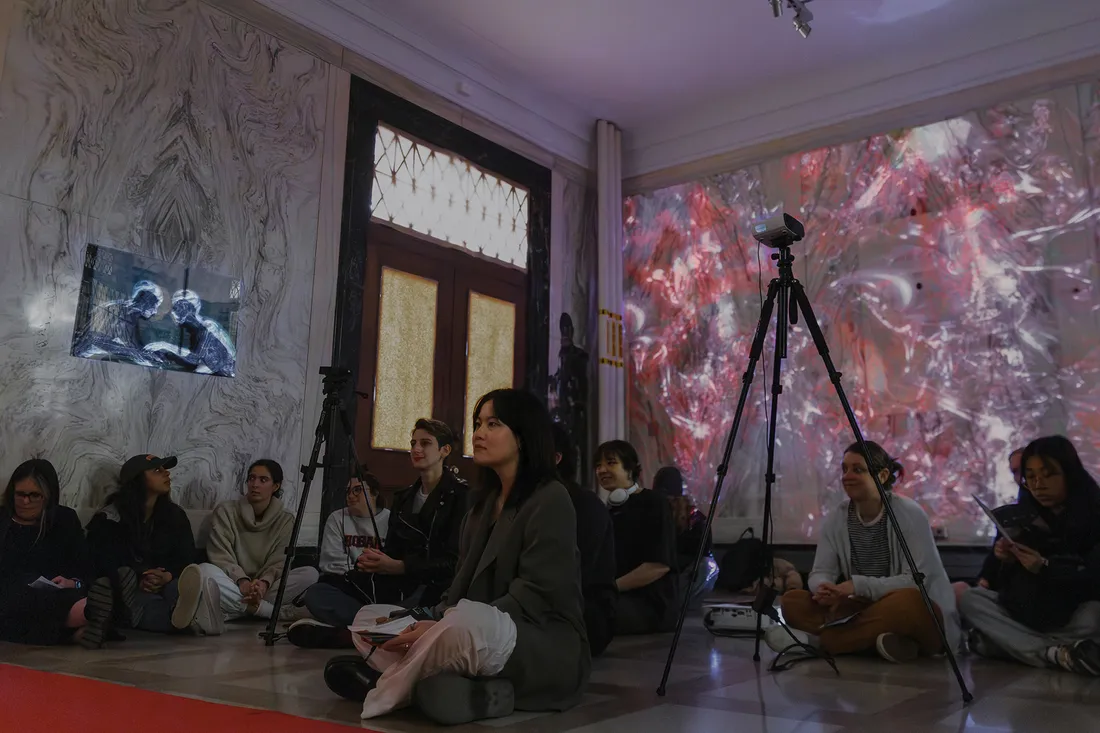
The project culminated Tam’s studies at the School of Architecture and helped her realize what she wants to do in the future. In the fall, she’ll pursue a master’s degree in the United Kingdom.
An Immersive, Evocative Expression of Research
At her exhibition, Tam’s peers and faculty from across the University stepped into a darkened room with tall marble walls. Video footage of two figures—sometimes striding through and sometimes standing still in a range of built and natural cultural landscapes—flickered over the walls, creating a layered visual effect.
On a red carpet in the center of the room sat a bulbous, reflective sculpture suggestive of body parts and faces. Moving over and around it, two actors—clad in black and ambiguously human or cyborg—interacted with each other through a wordless choreography. At times they seemed to be two independent individuals, while at other times they seemed to be reflections—or two versions—of a single person.
The sculpture’s mix of colors, textures and materials evoked flesh and blood in collision with hard and inorganic surfaces, and the performance suggested a complex interplay of tenderness and aloofness, connection and distance.
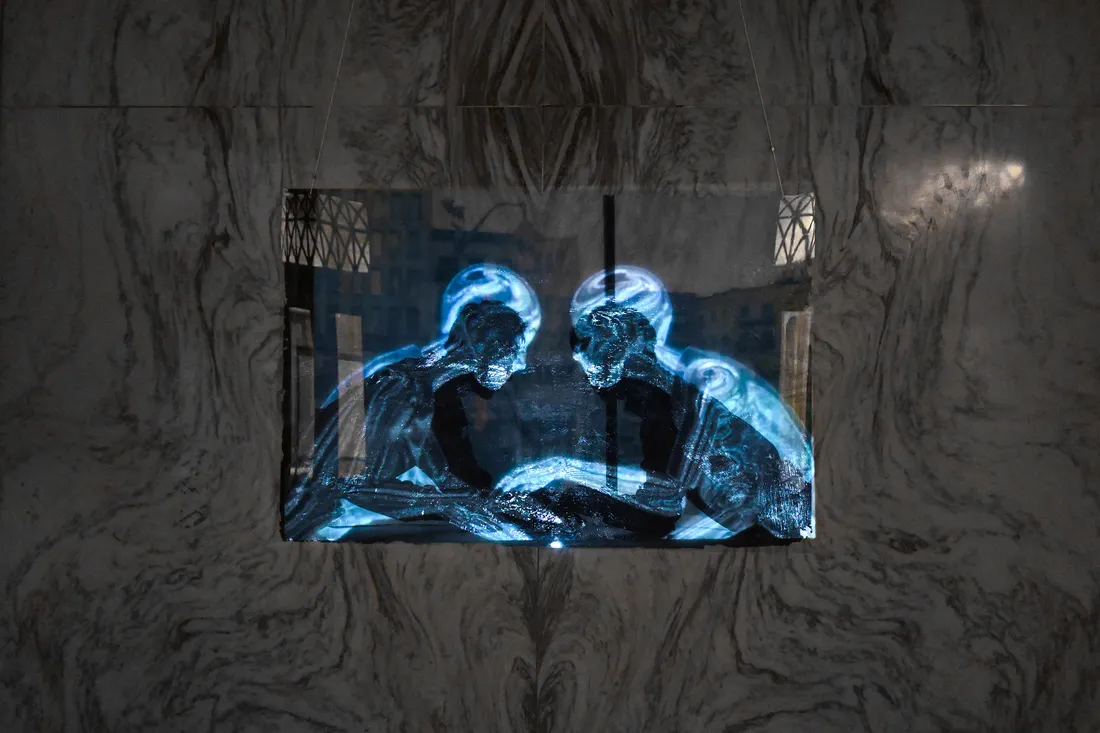
History professor Junko Takeda describes Tam’s work as Asian American resilience in action. “Her use of cyborgs who come alive and break out of their robotic shells defied Western perceptions of Asian Americans,” Takeda says. Image provided courtesy of Ngai Lan Tam.
Queer Celebration and Pushing Back on a Legacy of Colonialism
“I wanted to use queerness—which I interpret as a physical expression and concept that ruptures the system—to subvert and inspire discussion about techno-orientalism,” Tam says. “Architecture can help us understand the spaces and interactions between body and emotion. It has helped me frame bodies, objects and projections to tell a story about queer celebration and rejection of the Western gaze.”
Architecture can help us understand the spaces and interactions between body and emotion
Ngai Lan Tam ’23
Asian American Resilience in Action
History professor Junko Takeda, who taught her department’s first Asian American history and memoirs class—a course Tam found deeply meaningful—appreciates how Tam addresses many layers of East Asian American experiences. “Ngai Lan successfully interwove themes of empire, colonialism, Asian American invisibility, diasporic queerness and resilience into a beautiful visual, textual and three-dimensional exhibition and performance,” Takeda says. “Her use of cyborgs who come alive and break out of their robotic shells defied Western perceptions of Asian Americans. This piece was Asian American resilience in action.”
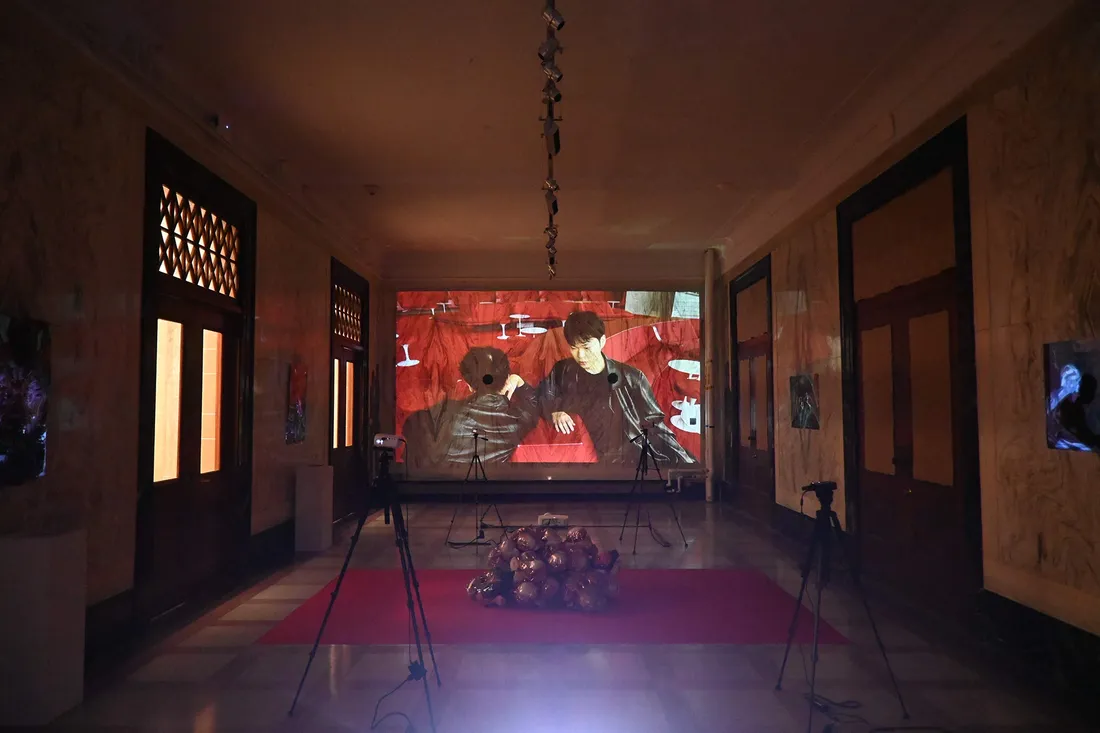
Tam’s project included a built experience that combined research, structural design, film and performances featuring her friends and collaborators, Can Chen ’22 and Yu Jie Chen ’23. Image provided courtesy of Ngai Lan Tam.
Meaningful Scholarship to the Discipline of Architecture
“Ngai Lan’s work is deeply rooted in a careful reading of history, aesthetics, media and philosophy,” says architecture professor Britt Eversole, who co-advised Tam’s thesis along with professors Jean-François Bèdard and Julie Larsen. “She has taken her architectural education, which gives her a certain acuity in understanding spatial problems, to speak to matters of race, gender, identity and queerness—recognizing that they are constructed in spatial and material ways in the world.”
Eversole appreciates how Tam’s work challenges some conventions in architectural scholarship and design. “Her thesis grapples with the long legacy of architecture, as well as other forms of visual media, being used to “other” peoples and cultures in particular ways. She’s asking us to be more conscious of how our visualization strategies can be exclusionary—and also how they can be hacked and hijacked and reframed to explore identity and give space to the communities and constituencies that we tend to design, rather than design for,” he says. “Her work asks, in part, that we never reduce communities or individuals to singular identities.”
She has taken her architectural education, which gives her a certain acuity in understanding spatial problems, to speak to matters of race, gender, identity and queerness—recognizing that they are constructed in spatial and material ways in the world.
Professor Britt Eversole
Setting the Stage for Continued Academic Exploration
Tam will join University College London, in the United Kingdom, in the fall to pursue a master of architecture degree in design for performance and interaction. “My thesis project at Syracuse University has helped me come to terms with what I want to do in the future,” she says. “I’m excited to build on what I learned from this project in graduate school.”

